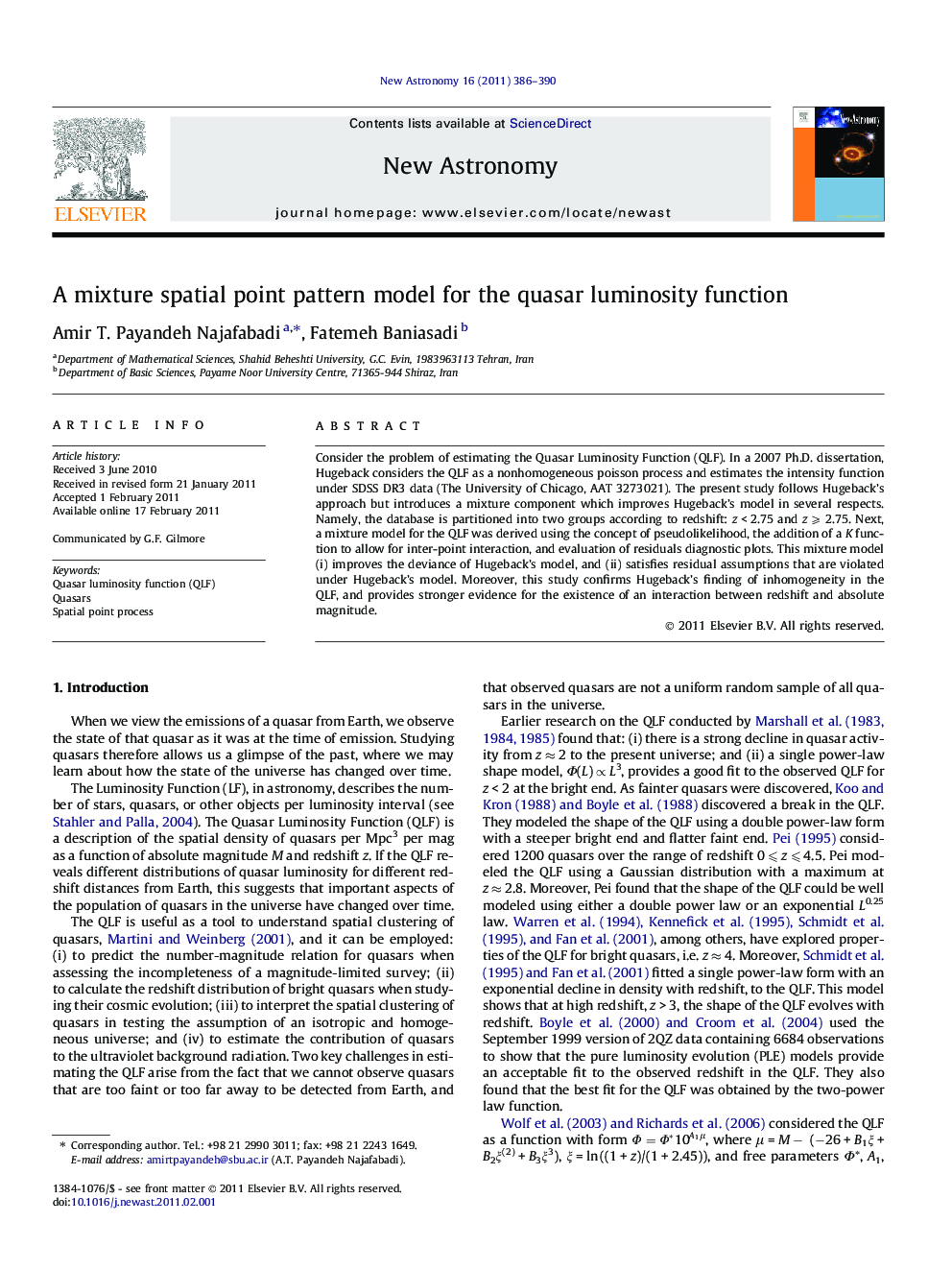| Article ID | Journal | Published Year | Pages | File Type |
|---|---|---|---|---|
| 1779259 | New Astronomy | 2011 | 5 Pages |
Consider the problem of estimating the Quasar Luminosity Function (QLF). In a 2007 Ph.D. dissertation, Hugeback considers the QLF as a nonhomogeneous poisson process and estimates the intensity function under SDSS DR3 data (The University of Chicago, AAT 3273021). The present study follows Hugeback’s approach but introduces a mixture component which improves Hugeback’s model in several respects. Namely, the database is partitioned into two groups according to redshift: z < 2.75 and z ⩾ 2.75. Next, a mixture model for the QLF was derived using the concept of pseudolikelihood, the addition of a K function to allow for inter-point interaction, and evaluation of residuals diagnostic plots. This mixture model (i) improves the deviance of Hugeback’s model, and (ii) satisfies residual assumptions that are violated under Hugeback’s model. Moreover, this study confirms Hugeback’s finding of inhomogeneity in the QLF, and provides stronger evidence for the existence of an interaction between redshift and absolute magnitude.
